Top 11 Trends in Cybersecurity For 2024
In the fast-paced world of cybersecurity, staying ahead of the curve is essential. As we dive into 2024, it’s crucial to be aware of the evolving landscape. Below, we’ll explore the top trends that will shape the cybersecurity arena in the coming year. Let’s break it down.
1. Attacks Against Cloud Services
Over the past few years, there has been a significant migration of business data, processes, and infrastructure to cloud computing. The advantages are clear: faster time-to-market, increased productivity, cost reduction, and improved flexibility. In 2023, Gartner predicts that public spending on cloud services will grow by a staggering 20.4%, reaching a remarkable $678 billion.
However, this shift isn’t without its challenges. Cloud-based threats such as reduced visibility and control, misconfigured cloud storage and settings, vulnerable cloud applications, incomplete data deletion, compliance issues, and migration concerns will continue to impact businesses. Organizations will grapple with the challenge of safeguarding their critical data in the face of attacks on cloud services. The key to success lies in implementing a mature and streamlined cloud governance model, which can significantly accelerate their security response capabilities.
2. Rise in IoT Devices
The Internet of Things (IoT) is growing at an exponential rate, with devices becoming increasingly integrated into our daily lives. Smart homes, wearable technology, and industrial IoT are just a few examples of this proliferation. However, as IoT devices become more commonplace, so do the security risks.
The interconnected nature of IoT devices creates numerous entry points for cybercriminals. Ensuring that these devices are secure is a daunting task, and vulnerabilities may lead to data breaches and privacy infringements. In 2024, the emphasis will be on improving the security of IoT devices and the networks they connect to. This trend will become pivotal as we seek to protect our ever-expanding digital ecosystem.
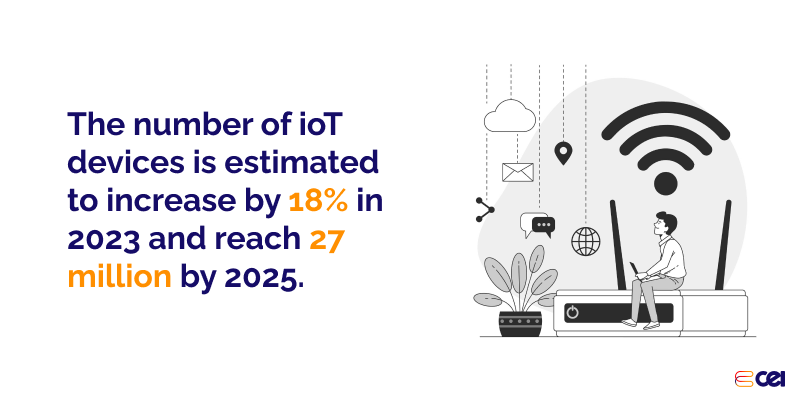
3. Integration of AI and Machine Learning
Artificial Intelligence (AI) and Machine Learning (ML) have become powerful tools in cybersecurity. They are not just the future but also the present. AI and ML enable systems to analyze vast amounts of data, identify patterns, and detect anomalies swiftly. This technology is a game-changer when it comes to threat detection and prevention.
In 2024, we can expect an increased integration of AI and ML in cybersecurity solutions. These technologies will not only enhance the efficiency of security systems but also enable predictive analysis. Cybersecurity professionals will harness the power of AI and ML to stay one step ahead of cyber threats.
To learn more about how AI can help businesses protect themselves from cyberattacks, check out our blog post – AI and Cybersecurity: How AI can help businesses from cyberattacks
4. Zero Trust Cyber Security
The Zero Trust model is a concept that has gained significant traction in recent years. It’s all about not trusting any entity within or outside your network. Every user and device, regardless of their location, is treated as a potential threat. This model focuses on identity verification and continuous monitoring to ensure security.
In 2024, Zero Trust cybersecurity will continue to gain popularity. It’s a proactive approach that safeguards against insider threats, external breaches, and lateral movement within the network. By implementing a zero-trust framework, organizations can fortify their security posture and minimize the risk of unauthorized access.
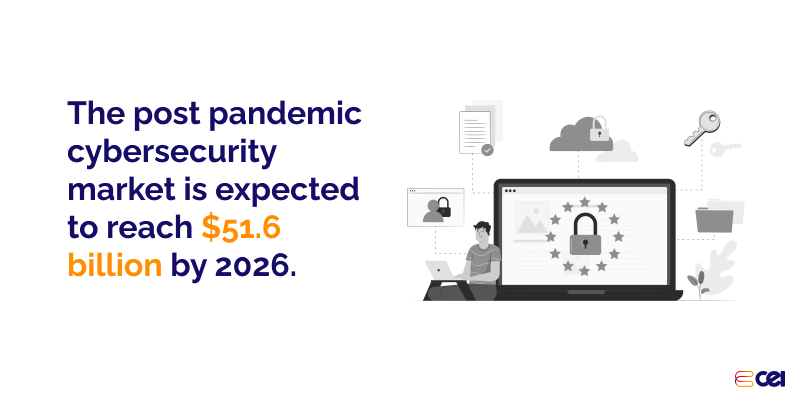
5. Multi-factor Authentication
The days of relying solely on passwords for authentication are numbered. Multi-factor authentication (MFA) is becoming the standard for securing accounts and data. MFA adds an extra layer of security by requiring users to provide multiple forms of verification, such as something they know (a password), something they have (a smartphone), and something they are (biometrics).
In 2024, MFA will be a non-negotiable security measure for businesses and individuals alike. It significantly reduces the risk of unauthorized access, making it a critical component of cybersecurity strategy. Expect to see a surge in its adoption as organizations prioritize safeguarding sensitive data.
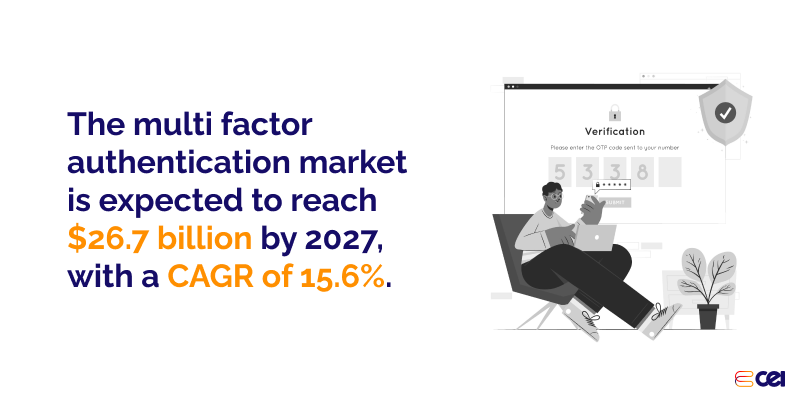
6. Continuously Evolving Ransomware
Ransomware has been a persistent and evolving threat. Cybercriminals are constantly refining their tactics to maximize their profits. In 2024, ransomware attacks are expected to become even more sophisticated, targeting both individuals and organizations.
The best defense against ransomware is a robust backup and recovery strategy. Regularly backing up data, educating employees on the dangers of phishing, and implementing effective security measures are essential. The fight against ransomware will continue to be a top priority in cybersecurity.
7. Rise in Insider Threats
While external threats often dominate headlines, insider threats are a growing concern. Insider threats can be either malicious or unintentional. Employees or trusted individuals can compromise security by accident or with malicious intent.
In 2024, organizations will focus on enhancing their monitoring and detection capabilities to identify insider threats promptly. Employee training and awareness will play a crucial role in mitigating these risks. The key is to strike a balance between trust and vigilance.
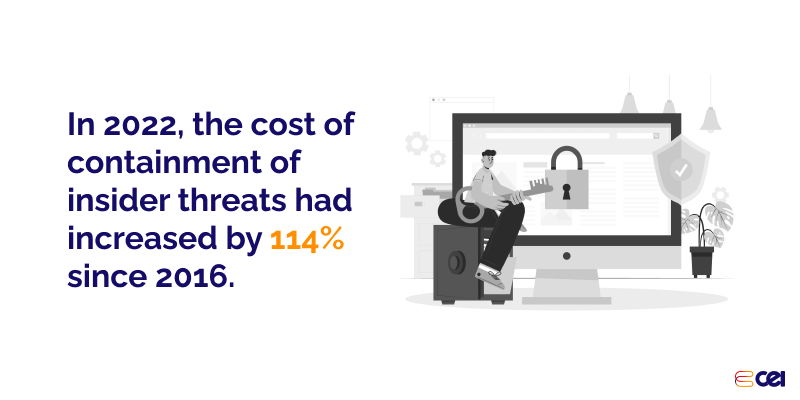
8. Explosion of BYOD and Mobile Devices
The Bring Your Own Device (BYOD) trend is showing no signs of slowing down. With remote work becoming the norm, employees are using their personal devices for work-related tasks. While this approach offers flexibility and convenience, it also poses security challenges.
In 2024, we will witness a continued explosion of BYOD and mobile device usage. To secure sensitive corporate data on these devices, organizations will need to implement robust mobile device management (MDM) solutions and enforce security policies. The challenge is to strike a balance between employee productivity and data protection.
9. Growing IT Skills Gap
The demand for skilled cybersecurity professionals is higher than ever. However, there’s a growing gap between the demand and the available talent. In 2024, this IT skills gap will persist, making it challenging for organizations to find qualified experts to manage their cybersecurity needs.
Organizations will need to invest in training and development programs to upskill their existing staff and attract new talent. The shortage of cybersecurity experts is a pressing issue that can’t be ignored.
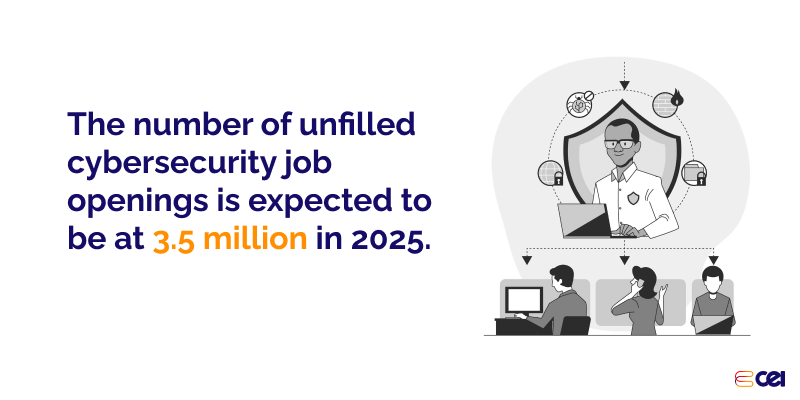
10. Increasing Threat of Deepfakes
Deepfake technology, which involves manipulating audio and video to create realistic but fabricated content, is a rising concern. Deepfakes can be used for social engineering attacks, impersonating individuals, and spreading disinformation.
As the threat of deepfakes grows, organizations will need to invest in deepfake detection tools and strategies to protect their reputation and data integrity. Awareness and education are key in countering this emerging threat.
11. International State-sponsored Warfare
Cyber warfare isn’t limited to rogue hackers; nation-states are also actively involved. In 2024, we can expect to see an increase in state-sponsored cyberattacks and espionage. These attacks can have significant geopolitical implications and disrupt critical infrastructure.
To counter this trend, countries will need to strengthen their cybersecurity defenses and work together on international cybersecurity initiatives. The landscape of international cybersecurity is evolving, and cooperation is essential to mitigate threats.
In conclusion, the cybersecurity landscape in 2024 is marked by a combination of technological advancements and evolving threats. Staying informed and proactive is crucial for individuals and organizations alike. By embracing these trends and implementing robust security measures, we can navigate the digital landscape safely and securely.
